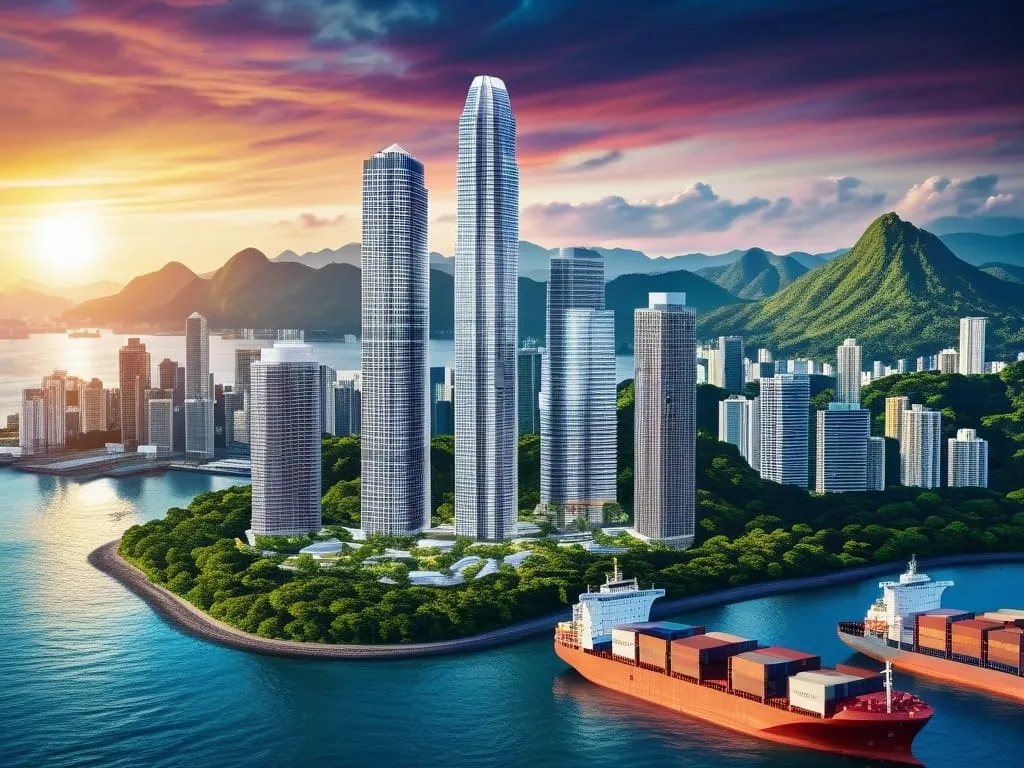In the early 2000s, after the dot-com bubble burst, central banks, particularly the U.S. Federal Reserve, kept interest rates low to stimulate the economy. This led to growth and apparent stability across various sectors, notably housing.
During this period, significant foreign capital flowed into the U.S. from countries like Russia and various Asian nations seeking stable investments. American banks, eager to maximize returns, relaxed lending standards and aggressively pushed mortgages.
Banks introduced subprime mortgages for borrowers with poor credit, featuring low initial rates that would later adjust higher. These adjustable-rate mortgages (ARMs) made homeownership seem achievable for many. The surge in lending and easy credit access fueled a housing market boom, driving up home prices. This apparent prosperity hid the growing risk of defaults as borrowers faced escalating payments, setting the stage for the impending crisis.
Financial Instruments and Tricks
Investment Banks like Goldman Sachs bundled thousands of mortgages, including risky subprime loans, into financial products known as Collateralized Debt Obligations (CDOs). These CDOs were sold to investors like pension funds and other financial institutions, spreading the risk of individual mortgages across a broader market.
To make risky CDOs more attractive, banks used Credit Default Swaps (CDS), a form of insurance against default. AIG, America's largest insurance company, played a crucial role by issuing these swaps. This effectively transferred the risk from the Investor with CDOs to AIG, making the investments seem safer.
AIG's Financial Products division in London engaged in financial alchemy by selling CDS on CDOs with poor credit ratings. This practice allowed these risky CDOs to inherit AIG's high credit rating. The widespread use of CDS masked the true risk of CDOs, encouraging further investment and inflating the housing bubble.
The Great Collapse
In 2007, the housing market began to crumble as adjustable-rate mortgages reset to higher rates. Borrowers, unable to meet increased payments, defaulted in large numbers, causing a sharp decline in home prices and mortgage-backed securities' values.
As defaults surged, the CDOs backed by these subprime mortgages collapsed. Investors turned to AIG to cover the losses through their CDS agreements. However, AIG had issued far more CDS than it could cover, expecting the housing market to remain stable. Their reserves quickly depleted, leading to an inability to honor these contracts.
With AIG unable to pay out on the CDS, banks and financial institutions that had relied on these swaps for security faced massive losses. Lehman Brothers' bankruptcy on September 15, 2008, highlighted the interconnectedness of the financial system, triggering a global credit crisis and widespread economic panic.
Government Intervention
Initially, the Federal Reserve took a hard stance against bailouts, aiming to teach Wall Street a lesson and prevent moral hazard. However, as the crisis deepened, the potential collapse of AIG presented an existential threat to the global financial system.
On September 16, 2008, just a day after declaring no more bailouts, the U.S. government intervened to save AIG. The Federal Reserve provided an $85 billion loan in exchange for a 79.9% equity stake. This move was crucial to stabilize the financial markets and prevent a total economic meltdown.
The bailout enabled the government to replace AIG’s top executives. The new CEO, appointed at a symbolic $1 salary, was tasked with dismantling AIG's convoluted financial structures. The focus was on unraveling the risky positions that had led to the crisis, ensuring AIG could meet its obligations and restore confidence in the financial system.
Aftermath and Consequences
The immediate aftermath of AIG's near-collapse saw stock markets plummet, with the Dow Jones Industrial Average hitting its lowest point since 1997. AIG reported the largest corporate loss in history, necessitating severe cutbacks and restructuring to stay afloat.
AIG faced numerous lawsuits from investors who claimed they were misled about the risks associated with the company's financial products. These legal battles resulted in nearly a billion dollars in settlements, further straining the company's finances.
To stabilize, AIG drastically reduced its workforce, cutting staff by more than half. The company focused on divesting non-core assets and restructuring its operations. These efforts were crucial in restoring some level of profitability and ensuring the company's long-term viability.
Recovery
Despite initial losses, the government's intervention in AIG eventually paid off. By 2012, the Federal Reserve had sold its stake in AIG, yielding a $22 billion profit. This outcome was unprecedented given the scale of the bailout and demonstrated a successful recovery effort.
After years of restructuring and stabilization, AIG was removed from the "too big to fail" list in 2017. This marked a significant milestone, indicating that AIG had sufficiently reduced its systemic risk and was once again a stable, albeit smaller, insurance entity.
The Great Recession spurred extensive changes in financial regulations to prevent a similar crisis. The Dodd-Frank Act, introduced in 2010, aimed to increase transparency, reduce risk in the financial system, and protect consumers. These reforms emphasized the need for robust oversight and better risk management practices to safeguard the economy.






